Daishi-bari Mounting | Kakejiku Mounting Which Realizes Increase in Size of A Look of Small Artwork
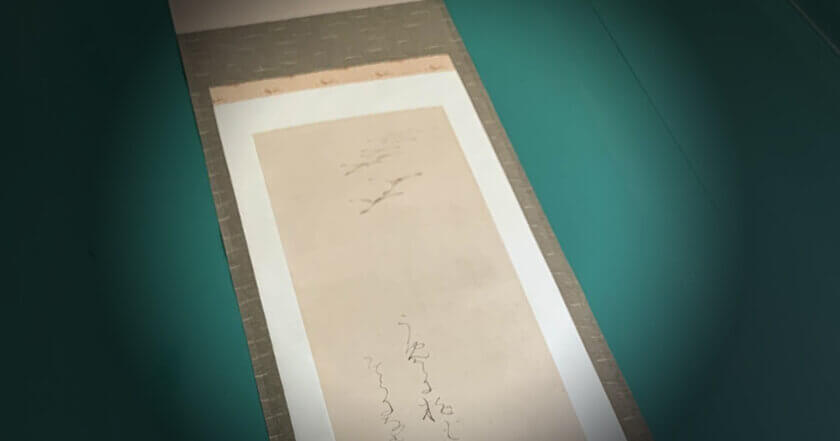
A pretty common inquiry from our customers is
‘My artwork is rather small so if mounted as it is, it could make the finished kakejiku unimpressive when it’s displayed at my alcove. Is there anything you can do?’
Let me explain the issue.
If a small work is to be mounted on a hanging scroll in the usual way, the finished dimensions (the overall dimensions of the hanging scroll) will naturally be smaller to match the dimensions of the work.
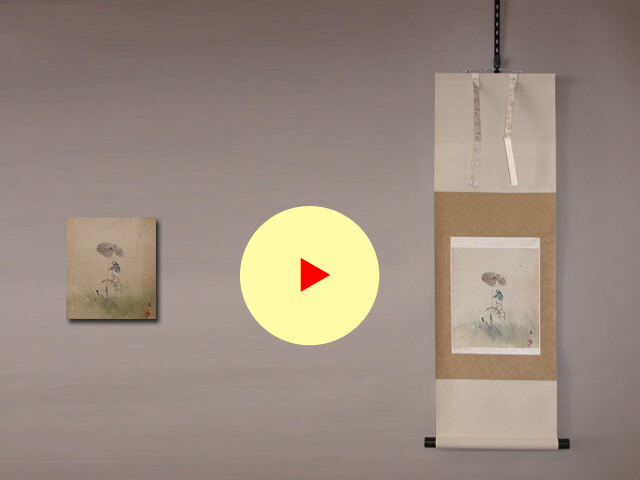
That means when a small-sized kakejiku is displayed, a spacious alcove creates an illusional look of even smaller kakejiku which could look scanty and make the space full of openings.
The answer for the crisis is a mounting style called ‘daishi-bari’.
‘Daishi-bari’ also named ‘Dai-hyōgu’ is a mounting style of a hanging scroll that an art piece is glued to a bigger-sized Japanese paper whose dimensions will be regarded as the art piece’s.
Relatively small pieces of art like shikishi /square poetry card and tanzaku/artistic paper board tend to be mounted with a daishi-bari style, still mounting of a fairly large piece with a not quadrilateral (e.g. round shape) or irregular shape could be done this way to neaten the outline of it.
An order we received this time is the daishi-bari mounting placed by a German customer.
We’ve been carrying out restoration works for the kakejikus that belong to the repeating customer.
Here are the editions about the works.
The kakejikus below are the pieces that required the work.
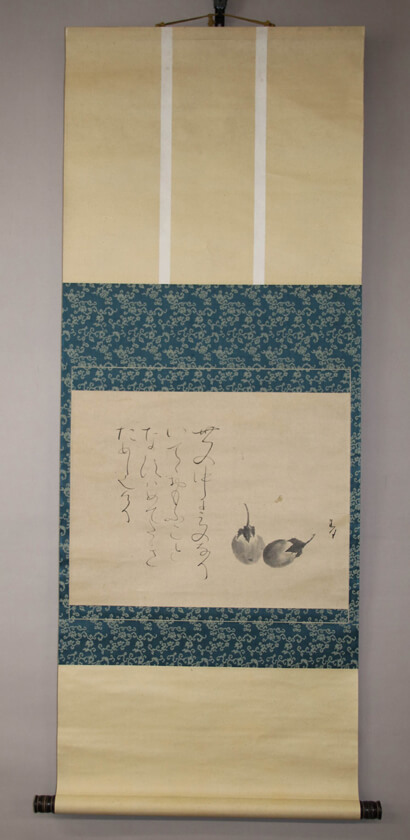
The kakejiku portraying aubergines

The kakejiku portraying wild geese
Both are works of Gasan (painting with inscription/praise associated with their content) and the aubergines one was the piece which can be mounted normally, on the other hand, the wild geese one had been previously mounted in a daishi-bari style.
Apparently, the size of the main art is petite so understandably a daishi-bari process must’ve been employed by the former mounter.
Of course, German customer would have no way of knowing the history of this kakejiku, we explained to him ‘What’s daishi-bari?’ as well as ‘What’s for?’ before asking his preference for the remounting which will be either with a daishi-bari style or a usual one.
It is very difficult to explain the process of mount procedure in English because it requires a lot of background knowledge regarding Japanese hanging scrolls and their mount. However, we believe it is best to provide a proper explanation, so we try to explain the process to our customers as carefully as possible to make everything clear.
This customer too was pleased with our detailed explanation and requested to have his “wild geese” kakejiku remounted with a daishi-bari style.
Possibly, he found it amusing that he can discover various aspects of Japanese culture while listening to our commentary with the details.
The photo below shows the kakejiku in the middle of the daishi-bari process.
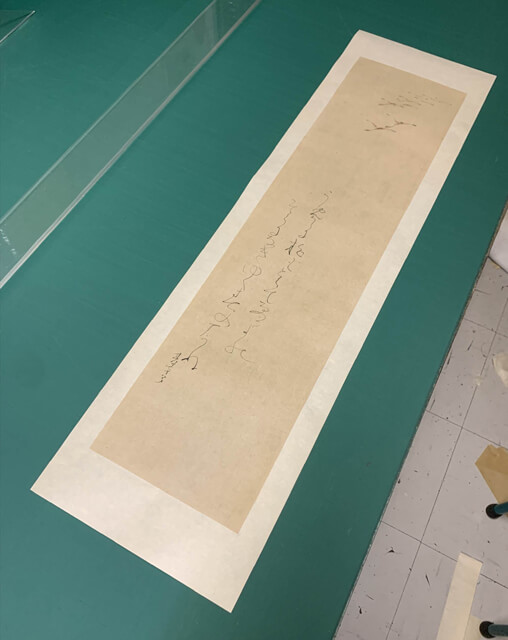
We cut out the rectangle in the center of the Japanese paper. This shape must be slightly smaller than the actual artwork since we will need some margin for gluing. The artwork will be perfectly fitted in the Japanese paper this way.
The reason for cutting out the rectangle (instead of just pasting artwork on the paper) is that the glued art piece and mount create an unwanted thickness and could result in folds on the remounted kakejiku when rolled up.
Here is the remounted piece. The kakejiku was brilliantly brought back to life with the daishi-bari technique.

Likewise, another kakejiku with an art piece drawing aubergines revived beautifully.
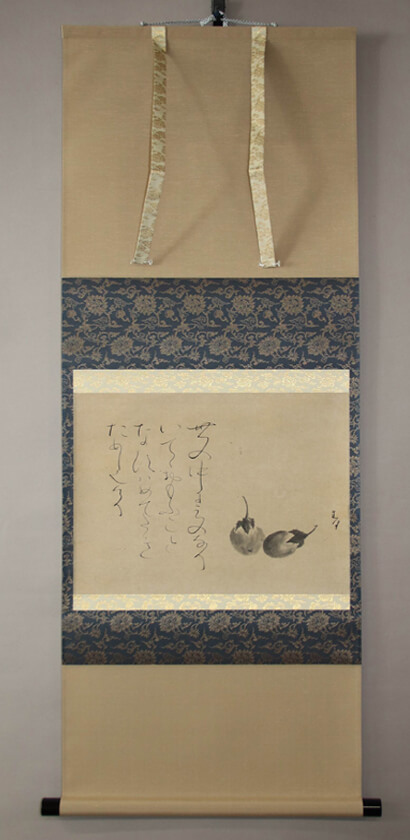
To our delight, the customer was very much appreciative of the result.
I am very happy to let you know, that the hanging scrolls arrived safely in Berlin and that I am super pleased with the result of the remounting.
Let me thank you again for your fantastic help by choosing the right fabrics and mounting style and the always good cooperation through the whole remounting process.
I am really enjoying working with you together and hope to meet you soon one time in person, when I will be able to come to Japan again.Looking forward to new future project and wishing you and your family all the best!
The culture of kakejiku has been declining in Japan. Nevertheless, the motivation of us all in Art Nomura has been raised by the fact that people who highly evaluate the traditional culture do exist in the world.
We are determined to continue to let the world know Japan’s attractiveness through our kakejikus.



